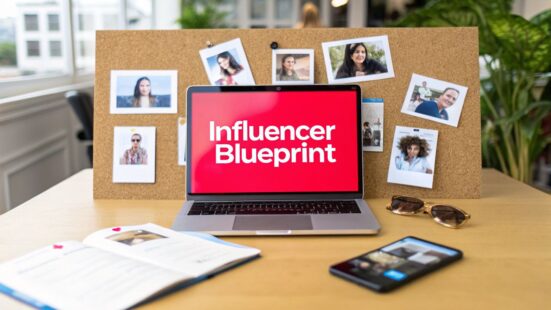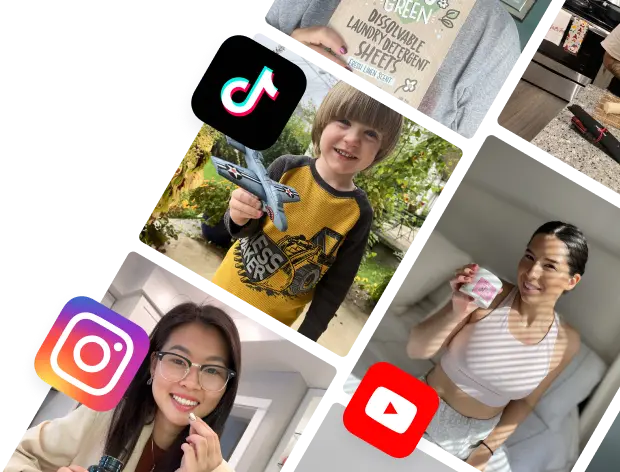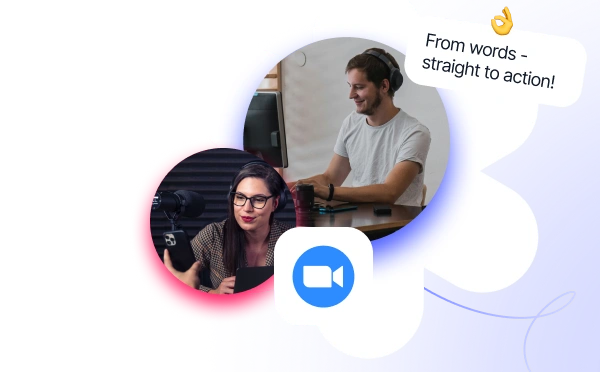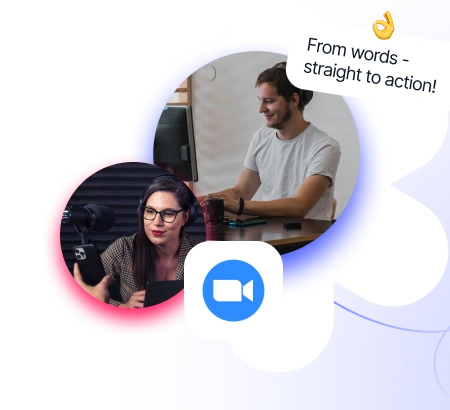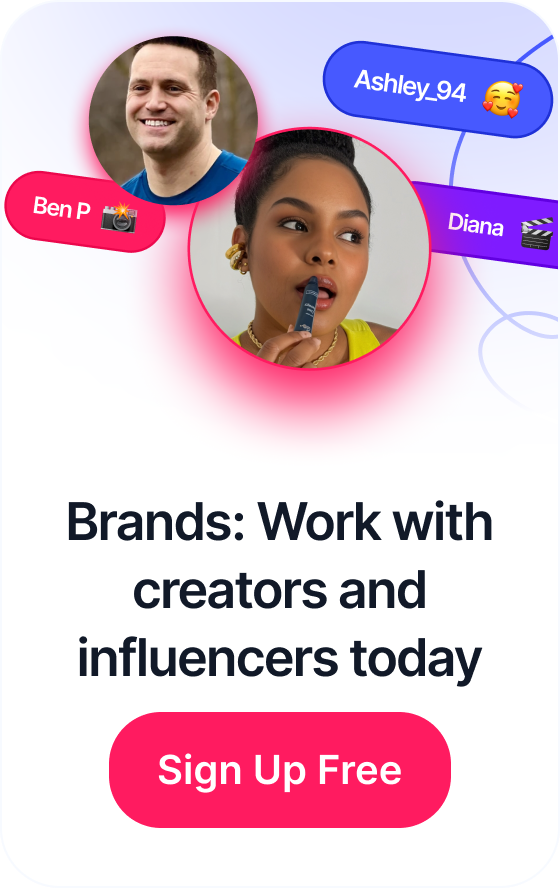 Mastering Influencer Marketing Campaigns
Mastering Influencer Marketing Campaigns
Finding the right influencers for your brand is less about chasing big follower counts and more about building smart, strategic partnerships that actually get results. It’s about digging in to find creators whose audience and values are a perfect match for yours.
This isn't about paying for a quick shoutout. It's about creating a genuine connection that builds trust, shifts how people see your brand, and delivers a return you can actually measure.
Table of Contents
Why the Right Influencer Changes Everything

A lot of brands get this wrong. They see influencer marketing as a simple transaction: pay for a post, get some eyeballs on it. But that view completely misses the point—and the power—of a true partnership. Finding the right creators isn't a numbers game; it’s a careful alignment of values, audience, and authenticity.
Let's face it, modern consumers are tired of old-school ads. They're looking for recommendations from voices they actually trust, and that's where influencers shine. When a creator who genuinely uses and loves a product talks about it, it doesn't feel like an ad. It feels like advice from a friend.
The Shift from Celebrity to Niche Authority
The days of relying only on massive celebrity endorsements are fading. While big-name macro-influencers still have a role to play, the real magic is often happening on a smaller scale with nano and micro-influencers.
These creators have built tight-knit, highly engaged communities around specific interests. They're trusted authorities in their niche.
Think about it: a partnership with a micro-influencer in the sustainable fashion world can do way more for an eco-friendly clothing brand than a generic post from a lifestyle celebrity with millions of followers. Why? Because their audience is already bought in. They're pre-qualified and deeply invested in that exact topic.
Finding the right influencer means you're not just renting their audience; you're borrowing their trust. That trust is the most valuable asset in modern marketing, creating a halo effect that boosts credibility and drives action.
A Measurable Impact on Your Bottom Line
This isn't just a feel-good theory; it's a massive, booming industry for a reason. Global influencer marketing is on track to hit $32.55 billion by 2025. What's more, over 80% of marketers confirm it's a strategy that flat-out works.
Brands are getting smarter, focusing on ROI by partnering with micro-influencers who consistently deliver better engagement rates and more authentic connections. You can find more details in these influencer marketing stats.
This shift toward measurable outcomes turns the search for an influencer from a simple marketing task into a critical business decision. It's the first step in building powerful, profitable partnerships that last.
Building Your Influencer Search Blueprint
Jumping into an influencer search without a clear plan is a surefire way to waste time and money. It’s like sailing without a map—you'll drift around, but you probably won’t end up where you intended. Before you even think about scrolling through profiles, you need to lay some foundational work.
This is the stuff that separates the wildly successful campaigns from the ones that fizzle out. It ensures you're finding partners who can deliver real, measurable results for your brand.
The first mental shift is to stop thinking about your product and start thinking about your partner. You're not just looking for a walking billboard; you're looking for a collaborator who genuinely gets your brand's vibe. That means building out an ideal influencer persona that goes way deeper than just follower counts.
Crafting Your Ideal Influencer Persona
Think of your influencer persona as a detailed profile of the perfect partner for your brand. It's the guidepost that keeps your search focused and saves you from getting distracted by shiny objects (like a massive follower count with zero relevance).
Start by outlining their core characteristics.
What values are non-negotiable? If you're a sustainable apparel company, you need creators who actually live that lifestyle, not just someone willing to hold your recycled-fabric t-shirt for a photo op. Their audience will see right through it.
Next, consider their communication style. Are they sharp and witty, or more inspirational and educational? Their voice has to feel like a natural extension of your own brand's messaging. If it clashes, the whole collaboration feels forced and you lose that crucial element of trust.
Finally, you have to dig into their audience demographics. It’s not enough for an influencer to love your product if their followers aren't your target customers. A creator might be a perfect personal match, but if 80% of their audience is in a region you don't even ship to, the partnership is dead on arrival.
Setting Clear and Realistic Campaign Goals
Once you know who you're looking for, you need to define exactly what success looks like. Vague goals like "get more exposure" are impossible to measure and lead to disappointing results. Instead, tie your entire search to specific, tangible Key Performance Indicators (KPIs).
Are you trying to cast a wide net for brand awareness?
- Track this: Impressions, reach, and brand mentions.
Trying to generate qualified leads for your sales team?
- Focus on this: Clicks to a specific landing page, email sign-ups from custom links, or resource downloads.
Need to drive direct sales, right now?
- Measure this: Conversion rates, revenue generated through unique affiliate codes, and your return on ad spend (ROAS).
Your campaign goal directly shapes the type of influencer you should be looking for. An awareness campaign might be a great fit for a macro-influencer's broad reach, but a sales-focused campaign often gets a much higher ROI from a micro-influencer’s tight-knit, trusting community.
Picking the right influencer tier is a strategic decision that aligns your budget, goals, and desired audience reach. This table breaks down how different influencer types can fit into your campaign strategy.
Matching Influencer Tiers to Your Campaign Goals
| Influencer Tier | Follower Count | Best For (Campaign Goal) | Key Advantage |
|---|---|---|---|
| Nano | 1K – 10K | Niche community building, high-trust conversions | Unmatched authenticity and engagement rates |
| Micro | 10K – 100K | Driving direct sales, targeted lead generation | Strong community trust with broader reach |
| Mid-Tier | 100K – 500K | Expanding market reach, large-scale awareness | Professional content with significant audience size |
| Macro | 500K – 1M | Mass brand awareness, new product launches | High-impact visibility and mainstream appeal |
| Mega | 1M+ | Celebrity endorsements, global campaigns | Maximum possible reach, celebrity-level status |
This framework helps you move beyond just follower counts and make a more strategic choice based on what you actually want to achieve.
For instance, raw follower count is often far less important than engagement. This chart shows the average engagement rates across different influencer tiers, and the story it tells is powerful.

The data is crystal clear: nano-influencers consistently deliver the highest engagement. This makes them an absolute goldmine for brands that want to build authentic community connections, not just blast a message out to the masses.
By creating this blueprint first, you ensure every step you take is strategic, targeted, and set up for a successful outcome.
With your game plan in hand, it’s time for the real hunt. Finding the right influencers requires a mix of old-school, hands-on discovery and the sheer power of modern tech. I always suggest starting with manual methods first; it helps you build an intuition for who truly fits your brand. Then, you can bring in the tools to build out your program at scale.
Honestly, the best place to start is often right under your nose. Your most passionate advocates might already be in your follower list, posting about your products just because they love them. Those people are pure gold for authentic partnerships.
Starting With Manual Discovery
Going manual is more than just mindlessly scrolling through feeds. It’s about getting a feel for the digital hangouts where your ideal customers and influencers gather. This hands-on approach is how you spot creators who have real sway in their niche, not just a big follower count with zero relevance.
A great first move? Scope out your competitors. See who they’re working with, but more importantly, look at the engagement on those sponsored posts. Are the comments just a bunch of emojis, or are people genuinely excited? This gives you a list of potential partners and some killer insights into what works with your shared audience.
Another classic manual technique is to dive deep into hashtags. Go beyond the obvious, broad terms and explore the niche, community-specific tags. For example, if you're a sustainable skincare brand, you'd skip #skincare and dig into tags like #ecobeauty or #cleanbeautycommunity. The creators who own these smaller, more focused conversations often have incredibly dedicated followings. If you're targeting these smaller communities, exploring the top strategies for finding micro-influencers can be a game-changer.
The whole point of manual discovery is to find authenticity. You're looking for creators who are already part of the conversation your brand wants to join. That way, the partnership feels natural and earned, not forced.
Leveraging Influencer Discovery Platforms
While manual methods are fantastic for finding those truly authentic voices, they just don't scale. Let's be real—it takes forever. This is where influencer marketing platforms step in, turning a painstaking search into a data-driven, efficient process. Think of them as super-smart search engines for creators.
These platforms let you filter a massive database of influencers using criteria that actually matter to your campaign. You can get super specific and narrow your search by:
- Audience Demographics: Pinpoint influencers whose followers match your target customer's age, location, and interests.
- Performance Metrics: Filter by things like engagement rate, follower growth, and even past brand collaborations.
- Content Keywords: Search for creators who consistently talk about topics relevant to your industry.
The explosive growth of this market shows just how critical these tools have become. The global influencer marketing platform market is expected to hit $70.86 billion by 2032, rocketing up at 17.0% a year. That boom is happening because brands desperately need better ways to find and manage talent.
Just take a look at the filtering power of a tool like Upfluence.

The screenshot shows how you can drill down with incredible precision—searching by keywords, social platforms, follower counts, and even specific audience data—to find that needle-in-a-haystack perfect match.
Finding the Right Balance
At the end of the day, the most successful strategies I've seen combine both approaches. Use your manual searches to identify a handful of perfect-fit, high-passion creators who will be your core ambassadors. At the same time, fire up a platform to build a broader list of potential partners who meet all your key demographic and performance benchmarks.
This dual strategy means you don’t have to sacrifice authenticity for scale. You really get the best of both worlds: the genuine connection from organic discovery and the data-backed efficiency of technology. For brands specifically looking to work with smaller, high-impact creators, our detailed guide on https://joinbrands.com/blog/how-to-find-micro-influencers/ has even more specialized tactics.
How to Vet Influencers Like a Pro
Right, you’ve got a list of potential influencers. The easy part is over. Now comes the real work: figuring out who’s actually worth your time and money.
Finding influencers is one thing; properly vetting them is what separates a killer campaign from a costly mistake. Think of this as your quality control step. It’s how you make sure you’re partnering with authentic creators who can genuinely connect with your audience.
It's easy to get distracted by a massive follower count, but that’s a classic rookie error. Those big numbers are often just vanity metrics. Real influence is all about the community and trust an influencer has built, not the number at the top of their profile.
This whole process is about digging deeper to confirm that a potential partner is the real deal. You’re hunting for signs of a genuine connection, a healthy and engaged audience, and content that actually aligns with what your brand stands for.
Look Beyond Follower Counts
First thing's first: you need to look at an influencer's engagement metrics—the right ones. Forget about likes and followers for a second and focus on the conversation.
An influencer’s comment section is a goldmine. Are people just dropping emojis and one-word replies, or are they asking thoughtful questions and having real discussions? Genuine engagement shows an audience that is actively listening and totally invested in the creator's content.
A high follower count with a dead comment section is a major red flag. It often points to purchased followers or a completely checked-out audience, neither of which will bring any real value to your brand.
You also need to calculate their authentic engagement rate. Don't just trust the number a platform spits out. Manually check out a few recent posts and plug the numbers into this simple formula:
(Total Comments + Total Shares + Total Saves) / Total Followers x 100
Notice we're leaving "likes" out of this. Why? Because likes are passive, low-effort, and super easy for bots to inflate. Comments, shares, and saves demand active participation and are a much stronger sign of a dedicated community.
As a general rule, a healthy engagement rate for a micro-influencer is typically above 3%. For macro-influencers, it might be a bit lower, closer to 1-2%.
Audit Their Audience Quality
Okay, so their engagement looks legit. Now it's time to figure out who their audience actually is. An influencer might have amazing engagement, but if their followers aren't your target customers, the partnership is a complete non-starter.
Here’s a quick checklist for auditing their audience:
- Demographic Alignment: Do their followers' age, gender, and location line up with your ideal customer profile? Most influencer platforms offer this data, but you can also get a decent feel for it just by scrolling through follower profiles yourself.
- Follower Growth Patterns: Look out for sudden, unnatural spikes in their follower count. A steady, organic growth curve is what you want to see. Big, abrupt jumps often mean they've bought followers to puff up their numbers.
- Comment Sentiment: Read through the comments on their recent posts, both sponsored and organic. Is the vibe positive and supportive? A toxic or spam-filled comment section reflects poorly on the creator and, by extension, any brand they work with.
Check for Brand and Value Alignment
Finally, you absolutely have to do a deep dive into their past content and partnerships. This is non-negotiable for protecting your brand's reputation. You're looking for a partner whose voice and values feel like a natural extension of your own.
Scroll deep into their feed—and I mean deep. Do their personal values seem to align with your brand’s mission? If you’re a wellness brand that promotes clean living, teaming up with an influencer who’s constantly pushing junk food is going to feel jarring and inauthentic to everyone.
Also, take a look at the other brands they’ve worked with. Are they in a similar or complementary niche? A history of partnerships with other reputable brands is a great sign. On the flip side, if it looks like they’re promoting a new, random product every other day, it might mean they’ll work with anyone for a paycheck. That kind of behavior can seriously dilute their credibility—and your brand’s message along with it.
This final check ensures you’re building a real partnership, not just another one-off transaction.
Crafting Outreach That Actually Gets a Response

Alright, you've done the hard work of identifying and vetting potential partners. Now comes the moment of truth: making first contact. Don't underestimate this step. Successful creators are absolutely bombarded with generic, copy-paste pitches every single day.
Your outreach needs to slice right through that noise. It has to be personal, professional, and genuinely compelling from the very first line.
Think of your initial message as the start of a relationship, not a sales pitch. The goal is simply to open a conversation, not to close a deal on the spot. This means taking a thoughtful approach that shows you respect their work and see them as a valuable collaborator, not just a megaphone for your brand.
Personalize Your Pitch Beyond Their Name
Personalization goes so much deeper than just dropping a [First Name] into a template. Anyone can do that. True personalization is about proving you’ve actually done your homework.
Your message must show a genuine appreciation for their specific content and style. A generic compliment like "I love your feed!" is instantly forgettable and screams "mass email."
Instead, reference something specific they recently created. Did they post a video about a recent trip that aligns perfectly with your travel brand's vibe? Mention a specific shot you loved or an insight they shared. This small effort immediately shows you’re a real person who values their work, not just another bot in their inbox.
Key Takeaway: Your outreach message should feel like it could only have been written for one person. If you could send the exact same email to a hundred different influencers, it’s not personal enough and will probably get deleted.
Keep your introduction brief and get to the point. Clearly state who you are, what your brand does, and—most importantly—why you're reaching out to them specifically. You need to connect the dots for them between their content, their audience, and your brand's mission.
Structure Your Message for a Clear Ask
Once you’ve made that genuine connection, it's time to briefly outline the potential collaboration. Avoid being vague. A clear, concise proposal shows professionalism and respect for their time. You don't need to lay out every contract term, but you should paint a clear picture of what you have in mind.
A well-structured outreach email usually hits these key points:
- A specific compliment: Mention a recent post, video, or article you genuinely enjoyed and why.
- A clear brand intro: Briefly explain what your brand is all about.
- The "Why You" statement: Clearly connect their content style or audience to your brand's goals.
- A concise proposal: Outline the type of collaboration you're thinking of (e.g., a series of Instagram Stories, a dedicated YouTube video).
- A clear next step: End with a simple, low-commitment question like, "Would you be open to hearing more about this?"
This approach gives the creator all the essential information without overwhelming them. It makes it easy for them to quickly understand the opportunity and decide if they want to respond.
For a deeper dive into managing these collaborations from start to finish, our guide on how to work with influencers provides a complete framework. By crafting outreach that is both personal and direct, you dramatically increase your chances of turning that first email into a valuable, long-term partnership.
Common Questions About Finding Influencers
Even with a solid plan, you're bound to run into questions. It happens to everyone. Navigating the world of influencer marketing means dealing with budgets, platforms, and all the little details that can trip you up.
Let's clear the air on some of the most common hurdles brands face when they're trying to find the right creators. Think of this as your quick-reference guide to making smarter moves.
How Much Should I Pay an Influencer?
Ah, the million-dollar question. The honest answer? It's all over the map. The cost depends entirely on the creator, their audience, and what you're asking them to do.
You might just send free products to a nano-influencer, or you could be paying thousands for a single post from a macro-influencer with a massive following. There's no universal rate card.
A few things that move the needle on price:
- Follower Count & Engagement Rate: Bigger numbers and more active communities almost always mean a bigger price tag.
- Content Type: A full-blown, dedicated YouTube video is a huge lift compared to a few quick Instagram Stories, and the cost will reflect that.
- Industry Niche: Creators in specialized, high-demand fields like finance or B2B tech can often charge a premium.
Your best bet is to go in with a budget but be ready to adjust. The real focus should be on the value a creator brings, not just their follower count. To really nail down your payment structure, check out our deep dive on how to pay influencers, which covers all the different compensation models.
What Is the Difference Between Nano and Micro Influencers?
This is a great question because while they seem similar, they serve different purposes. The real difference comes down to audience size and how they engage with their community. Getting this right helps you pick the perfect fit for your goals.
Nano-influencers are creators with roughly 1,000 to 10,000 followers. Their superpower is their incredibly tight-knit community. These followers trust them implicitly, which translates to some of the highest engagement rates you'll ever see.
Micro-influencers have a bigger playground, typically with 10,000 to 100,000 followers. They strike a great balance, mixing the authentic feel of a nano-influencer with a much broader reach. This makes them a fantastic, versatile choice for driving both awareness and sales.
Here's the bottom line: If you want hyper-targeted community building and recommendations that feel like they're coming from a friend, go nano. If you need a blend of trusted authority and significant reach, micro-influencers are often the sweet spot.
Should I Focus on Instagram or TikTok?
Don't just chase what's popular—chase your customer. The right platform is wherever your target audience is already spending their time.
TikTok is the undisputed king of short-form video and viral potential, especially if you're trying to reach Gen Z and younger millennials. Its algorithm is a bit of a wild card and can give a totally unknown brand massive visibility literally overnight.
Instagram, on the other hand, is a versatile powerhouse. With Reels, Stories, carousels, and static posts, it offers more ways to tell your story and appeals to a broader demographic. It's a go-to for highly visual brands in fashion, beauty, food, and home decor.
Before you decide, dig into your customer data. Figure out where they are, then meet them there with a message that feels right at home.
Ready to stop searching and start connecting? JoinBrands is an all-in-one platform built to help you discover, manage, and scale your influencer campaigns without the headache. Find your perfect match today at https://joinbrands.com.
